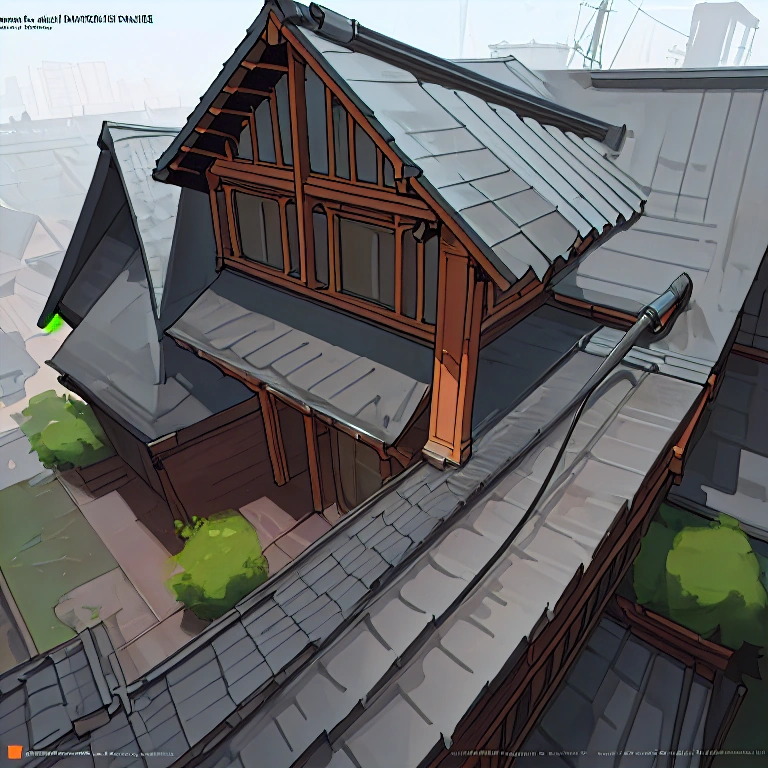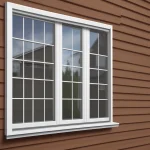Top Gutter Cleaning and Maintenance Strategies: A Homeowner’s Guide
The Silent Guardians: Why Gutter Maintenance Matters
The unsung heroes of your home’s defense against the elements, gutters often go unnoticed until disaster strikes. A neglected gutter system can lead to a cascade of problems, from basement flooding and foundation damage to siding rot and landscape erosion – a domino effect that quickly escalates into significant home repair expenses. This article delves into the critical importance of gutter cleaning and gutter maintenance, providing homeowners with the knowledge and strategies to safeguard their investment and prevent costly repairs.
We’ll explore everything from identifying potential issues to implementing effective cleaning techniques and preventative measures, ensuring your gutters perform optimally year-round. Ignoring your gutters is akin to neglecting the roofing itself, as a compromised gutter system directly impacts the roof’s ability to shed water effectively. This is a critical aspect of home improvement that often gets overlooked. Consider this: a single inch of rainfall on a 1,000-square-foot roof can generate over 600 gallons of water.
Without properly functioning gutters and downspouts, that water is channeled directly towards your home’s foundation, potentially causing cracks, leaks, and ultimately, structural damage. Furthermore, overflowing gutters can saturate the soil around your foundation, leading to hydrostatic pressure that can bow basement walls. Investing in regular gutter maintenance, including gutter cleaning and gutter repair when necessary, is a proactive measure that protects your home’s structural integrity and prevents water damage from taking hold. The cost of gutter protection, such as installing gutter guards, pales in comparison to the expense of foundation repair or basement waterproofing.
Beyond the immediate threat of water damage, clogged gutters can also become breeding grounds for pests like mosquitoes and rodents. Decaying leaves and stagnant water create an ideal environment for these unwanted guests, potentially leading to infestations that can spread throughout your home. Moreover, the added weight of accumulated debris and water can cause gutters to sag, pull away from the fascia, and even collapse entirely, necessitating costly gutter installation or replacement. Therefore, proactive gutter maintenance is not just about preventing water damage; it’s also about maintaining the overall health and hygiene of your property.
Homeowners should consider gutter cleaning a vital component of their regular home improvement checklist, alongside tasks like lawn care and roof inspections. Gutter guards offer a significant advantage in minimizing the need for frequent gutter cleaning. By preventing leaves, twigs, and other debris from entering the gutters, gutter guards reduce the likelihood of clogs and the associated problems. While no gutter protection system is entirely maintenance-free, the reduced cleaning frequency and enhanced protection against water damage make gutter guards a worthwhile investment for many homeowners. Different types of gutter guards cater to various needs and budgets, from simple mesh screens to more advanced surface tension systems. Selecting the right gutter guard for your home depends on factors such as the type of trees in your area, the amount of rainfall you receive, and your budget for gutter installation and maintenance.
Identifying the Enemy: Common Causes of Gutter Clogs
Leaves, twigs, and miscellaneous debris stand as the primary antagonists in the battle against functional gutters. Decaying leaves, especially those from oak and maple trees, compact into a dense, heavy sludge that effectively blocks water flow. Twigs and branches, often dislodged during storms, exacerbate the problem by creating structural dams within the gutter channels and downspouts. This accumulation, if left unchecked, transforms your gutter system from a protective asset into a liability, setting the stage for a cascade of water-related problems that can compromise your home’s structural integrity.
Effective gutter cleaning and gutter maintenance are therefore essential components of responsible home improvement. Over time, this organic buildup hardens and obstructs the intended path of rainwater, leading to significant water damage. The resulting overflow cascades over the sides of the gutters, saturating the ground around your foundation. This excess moisture can seep into cracks in the foundation walls, leading to basement flooding and long-term structural weakening. Furthermore, the constant dampness promotes the growth of mold and mildew, both of which pose health risks and can necessitate costly remediation.
Siding can also suffer, with paint peeling and wood rotting due to prolonged exposure to overflowing water. Addressing these issues promptly through gutter repair can prevent more extensive and expensive home improvement projects later on. Beyond the obvious debris, less visible culprits also contribute to gutter clogs. Roofing granules, shed from asphalt shingles over time, accumulate in gutters and form a gritty sediment that restricts water flow. Animal nests, built by birds, squirrels, or insects, can create significant blockages, especially in downspouts.
Furthermore, improperly installed gutter guards can themselves become sources of clogs if not regularly maintained, trapping fine debris and hindering water drainage. Regular inspection of your gutters, including the downspouts and any existing gutter protection systems, is crucial for identifying and addressing these hidden threats before they escalate into major problems. Consider professional gutter installation if your existing system is inadequate or prone to frequent clogging. Regular gutter cleaning, ideally twice a year (spring and fall), is crucial for preventing these issues.
However, homes surrounded by trees, particularly those with overhanging branches, may require more frequent attention. Look for telltale signs like water cascading over the sides of the gutters during rain, sagging gutters indicating excessive weight, or visible debris accumulation along the roofline. Addressing these warning signs promptly can prevent significant structural damage and expensive repairs down the line. Investing in gutter protection, such as mesh gutter guards, can significantly reduce the frequency of manual cleaning and provide long-term defense against debris accumulation.
Arming Yourself: Essential Tools and Safety Precautions
The arsenal required for effective gutter cleaning is surprisingly straightforward, yet selecting the right tools and adhering to strict safety protocols are paramount for both personal well-being and the longevity of your gutter system. A sturdy, adjustable ladder is non-negotiable; opt for one with rubberized feet to prevent slippage and consider a ladder stabilizer for enhanced security against the roofing edge. Heavy-duty work gloves are crucial, not only to shield your hands from sharp leaves, twigs, and potential rusty edges but also from harmful bacteria and mold often lurking within gutter debris.
A dedicated gutter scoop, often made of plastic to avoid scratching the gutter surface, is far more efficient than using your hands. Finally, a garden hose equipped with an adjustable spray nozzle allows for thorough flushing of lingering sediment and stubborn clogs. Remember to inspect your roofing shingles while you’re up there; loose or missing shingles can exacerbate gutter problems. Safety, however, transcends mere tool selection. Before ascending, meticulously inspect your ladder for any signs of damage or instability.
Position the ladder on a level, solid surface, ensuring it’s at a safe angle – roughly 75 degrees. A ladder stabilizer, which spans the width of the gutter, provides additional support and prevents the ladder from leaning directly against the gutter itself, potentially causing damage. Always wear safety glasses to protect your eyes from falling debris. It’s also wise to inform someone of your intentions and estimated timeframe, especially if you’re working alone. When cleaning, avoid overreaching; reposition the ladder frequently to maintain a comfortable and safe working posture.
Neglecting these precautions can lead to serious falls and injuries, negating any cost savings from DIY gutter maintenance. Beyond the basics, consider investing in specialized tools that can significantly improve efficiency and safety. A gutter cleaning attachment for your leaf blower can be a game-changer, allowing you to dislodge debris from the ground, eliminating the need to climb a ladder in many cases. For particularly stubborn clogs, a plumbing snake or auger can be used to break them up.
Furthermore, regular inspection of your downspouts is crucial; ensure they are clear and properly directing water away from your foundation. Clogged downspouts are a common cause of water damage and can render even the cleanest gutters ineffective. Finally, think about the long game: investing in gutter guards is a proactive step toward minimizing future cleaning efforts and preventing costly gutter repair or even gutter installation. Different types of gutter guards exist, each with its pros and cons, so research which option best suits your needs and budget. By prioritizing safety and employing the right tools, you can effectively maintain your gutters and protect your home from water damage.
The Shield Against Debris: Exploring Gutter Guard Options
While manual gutter cleaning is an effective method for removing accumulated debris, it demands a significant time commitment and presents potential safety hazards, especially for multi-story homes. Gutter guards offer a proactive and increasingly popular home improvement solution, designed to minimize the need for frequent cleaning by preventing leaves, twigs, and other debris from entering the gutter system in the first place. A wide array of gutter guard types are available on the market, each with its own set of advantages and disadvantages.
These include mesh screens, foam inserts, reverse curve (surface tension) systems, brush guards, and nylon guards, catering to diverse needs and budgets. Selecting the right gutter guard requires careful consideration of factors such as the type and volume of debris common to your area, the pitch of your roof, and your budget. Mesh screens, often crafted from aluminum or stainless steel, stand out as a widely used and relatively affordable option for gutter protection. Their fine mesh effectively blocks leaves, pine needles, and other large debris while allowing rainwater to flow freely into the gutters.
However, it’s important to note that finer debris, such as pollen and shingle granules from your roofing, can still accumulate on the surface of the screen over time, potentially requiring periodic cleaning. Foam inserts, typically made of polyurethane, offer a simple and cost-effective DIY gutter protection solution. They are easy to install by simply fitting them into the gutter channel. However, their porous nature makes them susceptible to trapping debris and organic matter, which can decompose and create a breeding ground for mold and mildew.
This necessitates more frequent cleaning compared to other gutter guard types, and they may not be suitable for areas with heavy debris loads. Reverse curve gutter guards, also known as surface tension systems, employ a unique design that utilizes the principle of water adhesion. Rainwater flows around a curved edge and into the gutter, while debris is directed over the edge and onto the ground. These systems are generally effective at preventing large debris from entering the gutters and require minimal maintenance.
However, they can be more expensive than other options, and their performance can be affected by heavy rainfall or high winds. For optimal performance and longevity of any gutter guard system, professional gutter installation is often recommended. A professional can ensure proper fitting and secure attachment, maximizing the effectiveness of the gutter guards and minimizing the risk of future problems. Furthermore, they can advise on the best gutter guard option for your specific home and environmental conditions, taking into account factors such as roof pitch, tree coverage, and local weather patterns. Investing in quality gutter guards is a worthwhile home improvement that reduces the need for gutter cleaning, protects your home from water damage, and extends the lifespan of your roofing and gutter system.
Long-Term Defense: Proactive Maintenance Strategies
Beyond cleaning and gutter guards, regular maintenance is key to extending the lifespan of your gutter system. Inspect your gutters periodically for signs of damage, such as cracks, leaks, or sagging sections. These seemingly minor issues can quickly escalate, leading to significant water damage to your fascia boards and roofing underlayment, requiring costly gutter repair or even full gutter installation. Addressing these problems early not only saves money but also prevents further deterioration of your home’s structural integrity.
Remember to check for loose hangers or brackets that may be causing the sagging; a simple tightening or replacement can often resolve the issue. Ensure that downspouts are properly connected and direct water away from your foundation, a critical aspect of effective gutter maintenance. Improperly positioned downspouts can lead to water pooling near the foundation, increasing the risk of basement flooding and long-term structural damage. Consider installing downspout extensions to channel water at least four to six feet away from the foundation.
Furthermore, ensure that the discharge area is properly graded to facilitate water runoff, preventing it from accumulating and potentially seeping back towards the house. Regularly clearing debris from the base of the downspouts is also essential to prevent blockages that can cause water to back up into the gutter system. Consider resealing gutter seams every few years to prevent leaks, especially in older systems. Over time, the sealant can dry out and crack, creating pathways for water to escape.
This escaping water can damage siding, trim, and even contribute to mold growth. A simple application of high-quality gutter sealant can effectively address this issue, providing a watertight barrier and extending the life of your gutters. Before resealing, thoroughly clean the area to ensure proper adhesion. For homes in areas with heavy snow or ice, proactive measures are even more critical. Consider installing heat cables to prevent ice dams from forming in the gutters. These cables melt snow and ice, allowing water to flow freely and preventing damage to the gutters, roofing, and potentially the entire structure.
Another often-overlooked aspect of long-term gutter protection involves assessing the surrounding landscape. Trim back any overhanging tree branches that could contribute to excessive leaf accumulation in your gutters. While trees provide shade and aesthetic appeal, their falling leaves are a primary cause of gutter clogs, necessitating more frequent gutter cleaning. Strategic pruning can significantly reduce the amount of debris entering your gutters, making gutter guards more effective and minimizing the need for manual cleaning. Furthermore, consider the placement of landscaping beds near the foundation. Ensure that these beds are properly sloped away from the house to prevent water from pooling and potentially seeping into the foundation, even with a well-maintained gutter system.
Securing Your Home: The Lasting Benefits of Gutter Care
Maintaining a healthy gutter system is an investment in the long-term health and value of your home. By understanding the causes of gutter clogs, implementing effective cleaning techniques, and adopting proactive maintenance strategies, homeowners can prevent costly repairs and protect their property from water damage. Whether you choose to tackle the task yourself or enlist the help of professionals, prioritizing gutter maintenance is a crucial step in safeguarding your home against the elements and ensuring its structural integrity for years to come.
Don’t wait for the next downpour to discover a problem – take action now to protect your investment. Consider the alternative: neglected gutters leading to foundation cracks, a problem that can easily escalate into a five-figure repair bill. Experts in home improvement consistently emphasize that preventative gutter maintenance, including regular gutter cleaning and timely gutter repair, is far more cost-effective than addressing the consequences of water damage. Investing in gutter guards, for example, can significantly reduce the frequency of manual cleaning, saving time and potentially preventing accidents associated with ladder work.
Furthermore, ensuring proper downspouts extension is crucial; directing water at least ten feet away from the foundation minimizes the risk of hydrostatic pressure buildup and subsequent basement leaks – a common issue addressed in roofing and home improvement circles. The benefits extend beyond mere cost savings. A well-maintained gutter system also plays a vital role in preserving the aesthetic appeal of your home. Overflowing gutters can stain siding, promote the growth of mold and mildew, and even damage landscaping.
Regular gutter maintenance, including clearing debris and ensuring proper water flow, prevents these unsightly issues and maintains your home’s curb appeal. Moreover, proper gutter installation is key; poorly installed systems are prone to sagging, leaks, and detachment, rendering them ineffective. Choosing a reputable contractor for gutter installation or replacement ensures that the system is correctly sized and positioned to effectively channel water away from your home. Finally, remember that gutter protection is not a one-size-fits-all solution.
Different types of gutter guards offer varying levels of protection and require different maintenance approaches. While mesh screens are a popular choice, they may still require occasional cleaning to remove fine debris. Foam inserts can be effective but may need replacement over time. Surface tension systems offer excellent protection but can be more expensive to install. Researching the options and selecting the right gutter guards for your specific needs and environment is a crucial aspect of long-term gutter maintenance and overall home improvement. By proactively addressing your gutter needs, you are actively safeguarding your home’s value and structural integrity.


